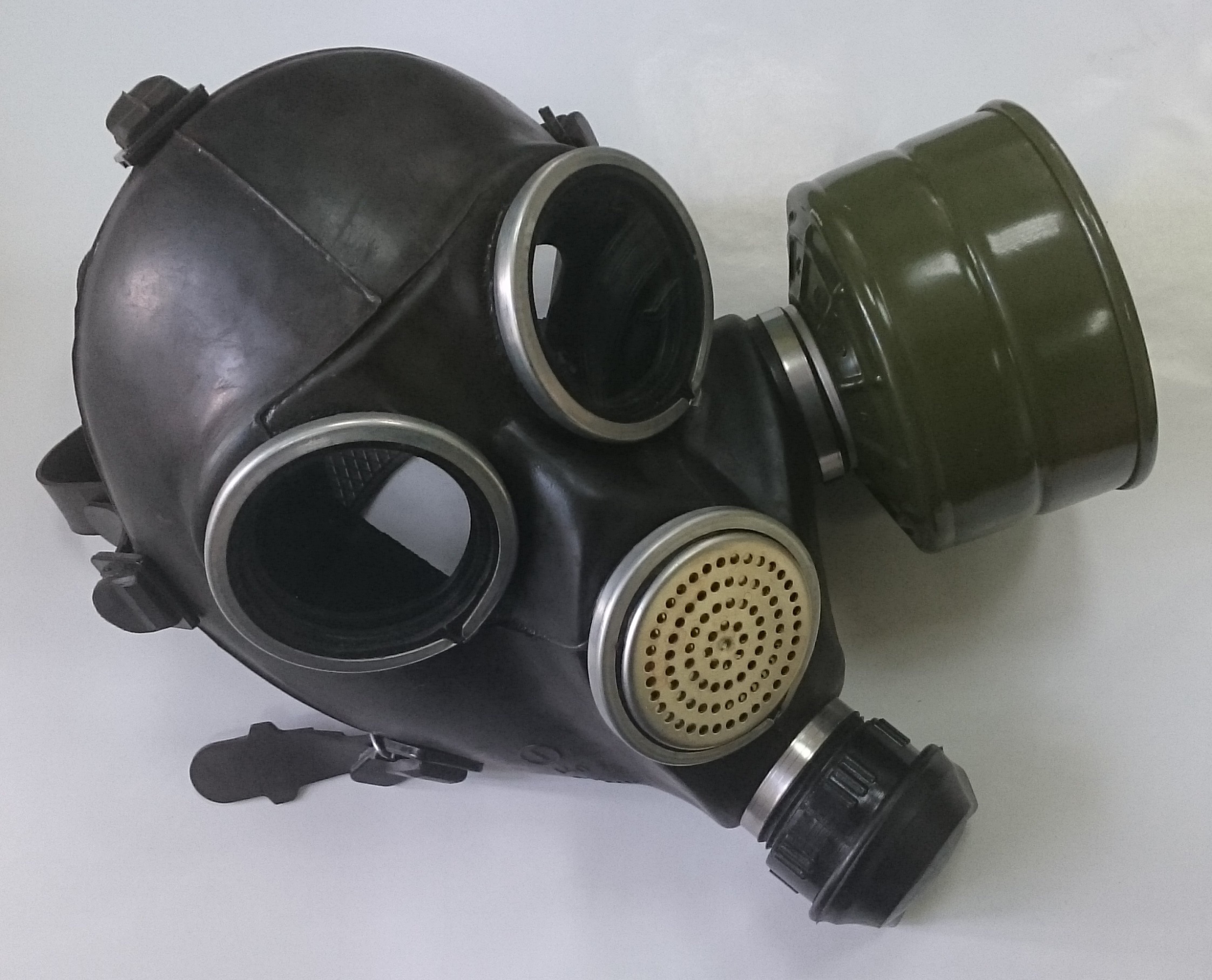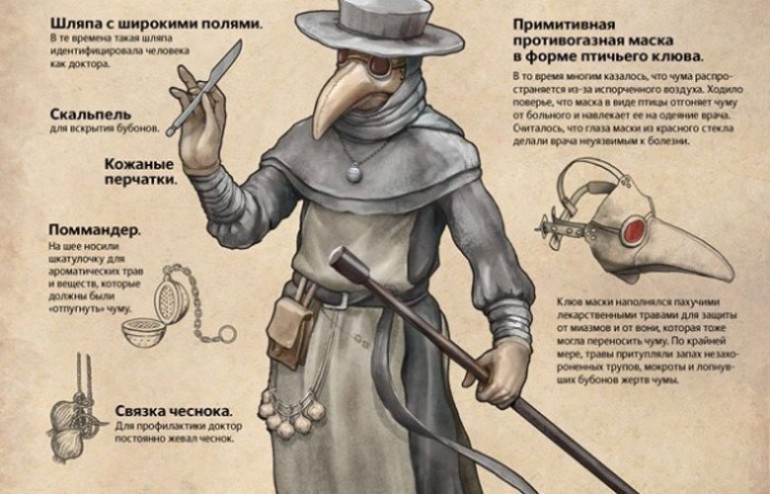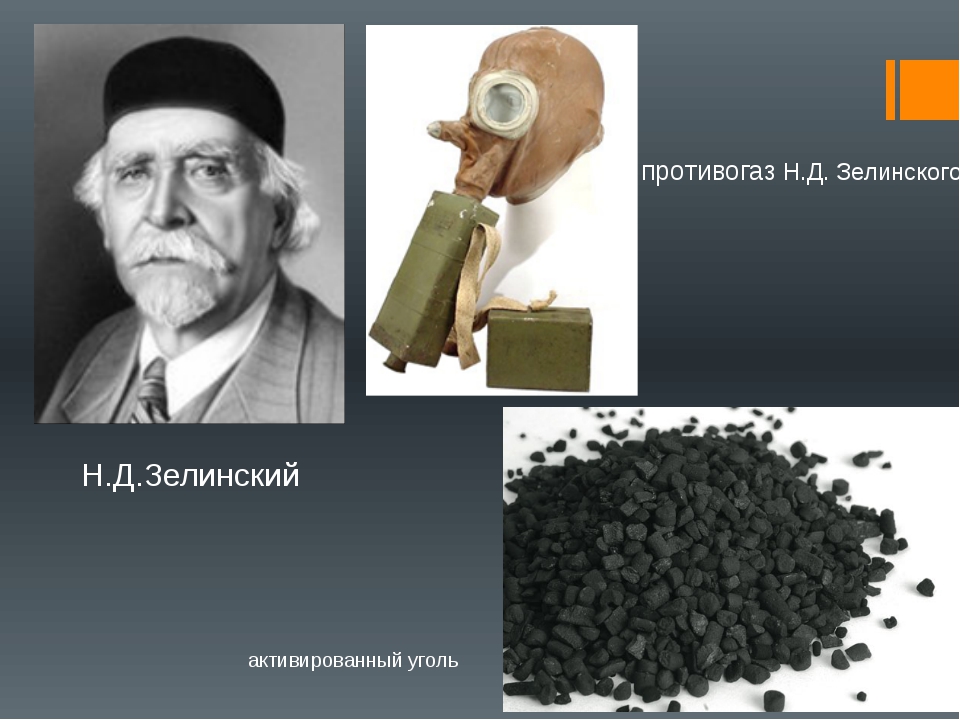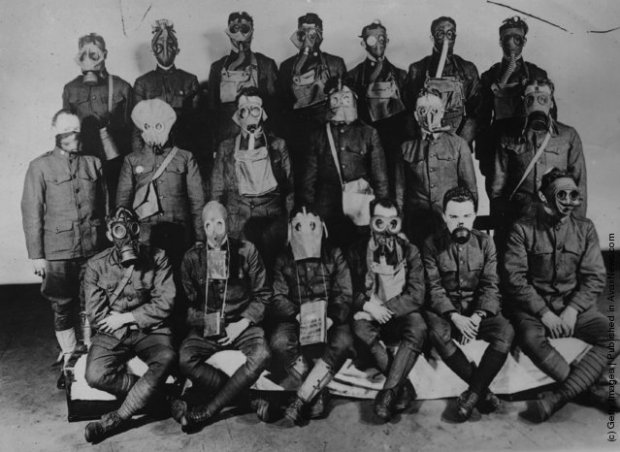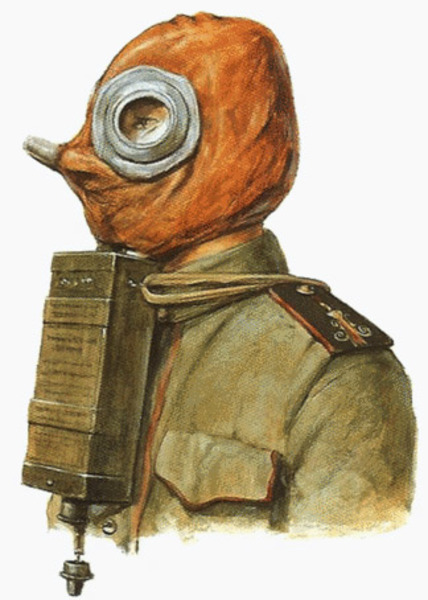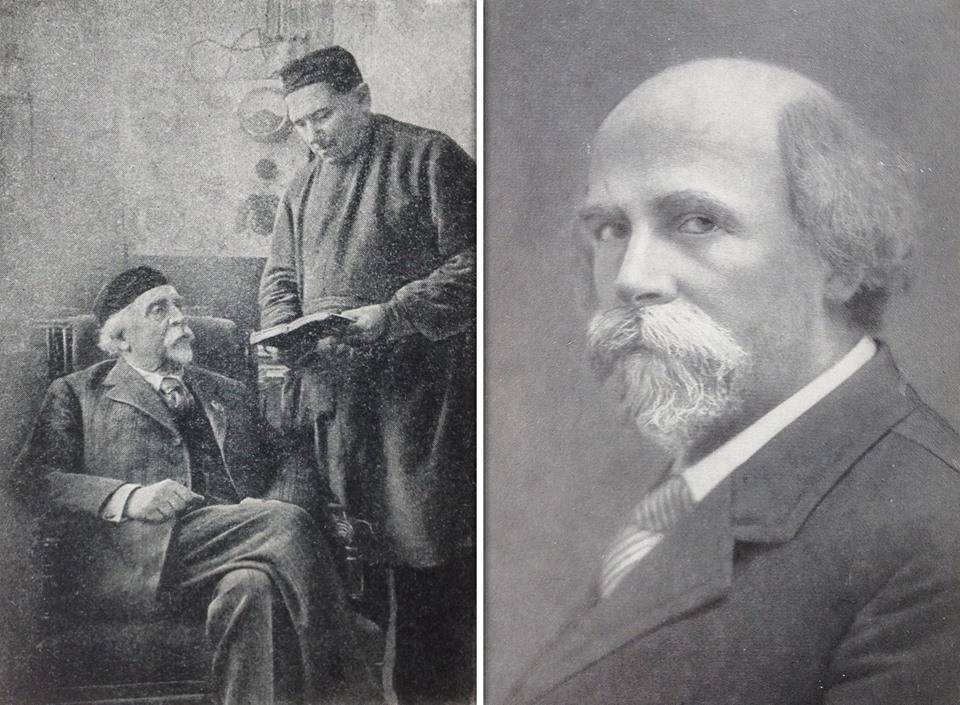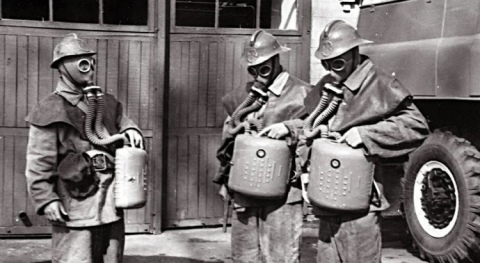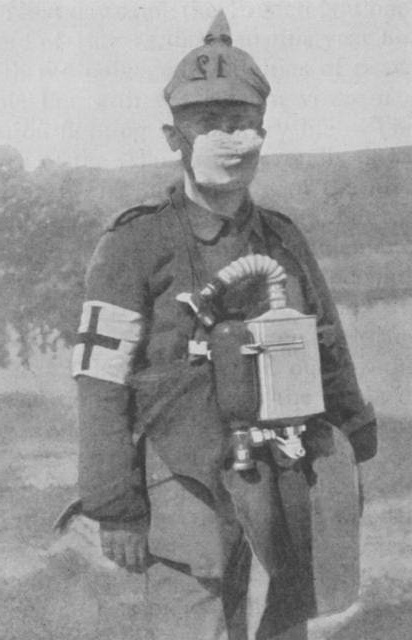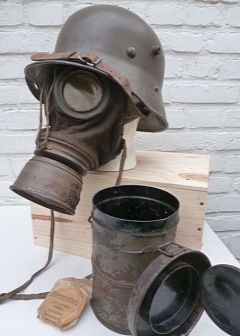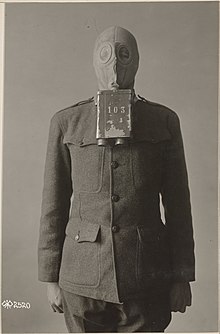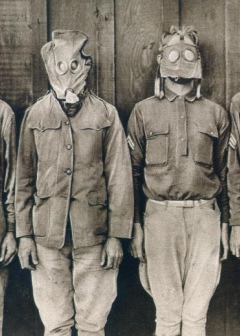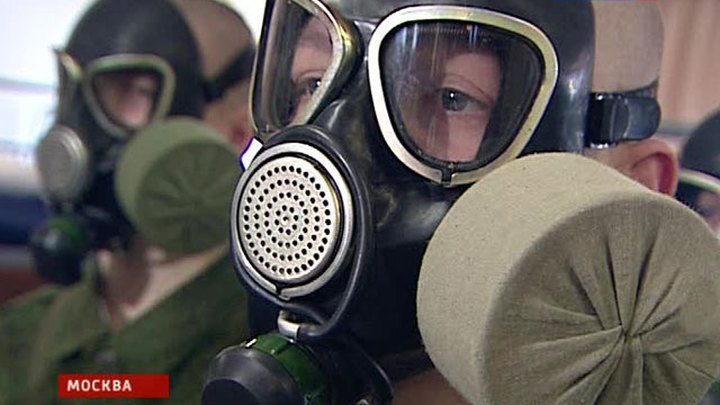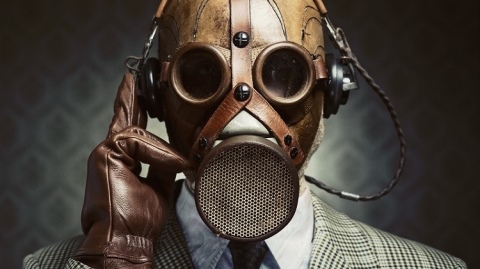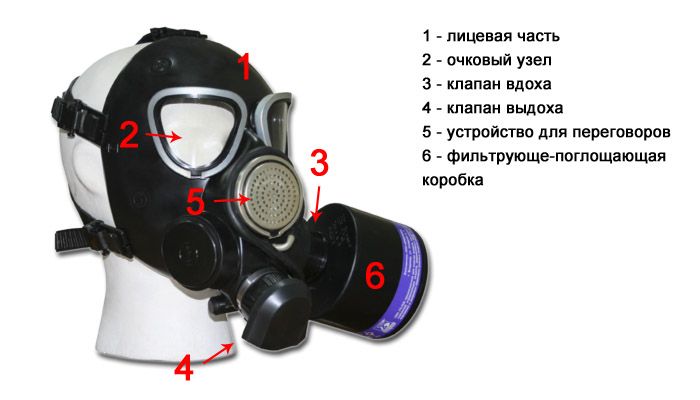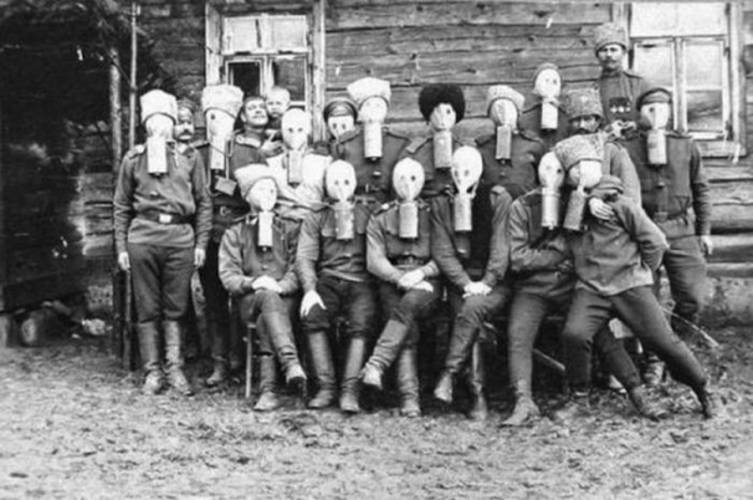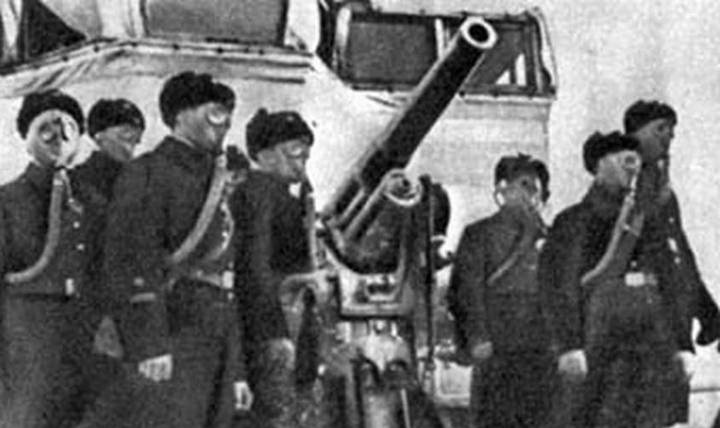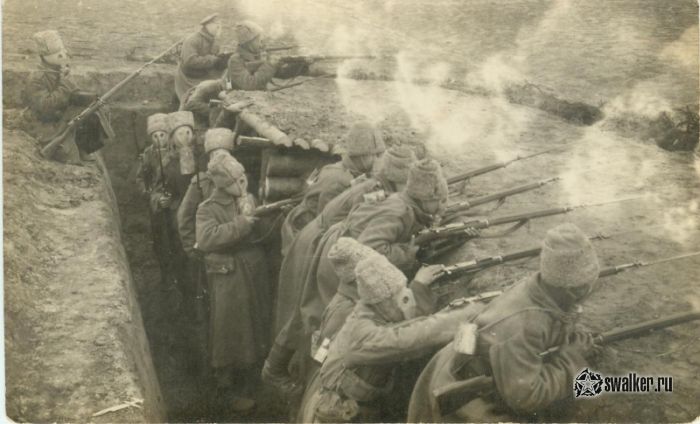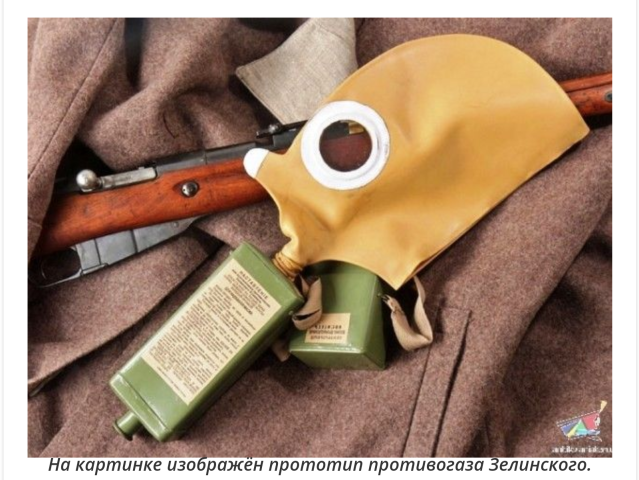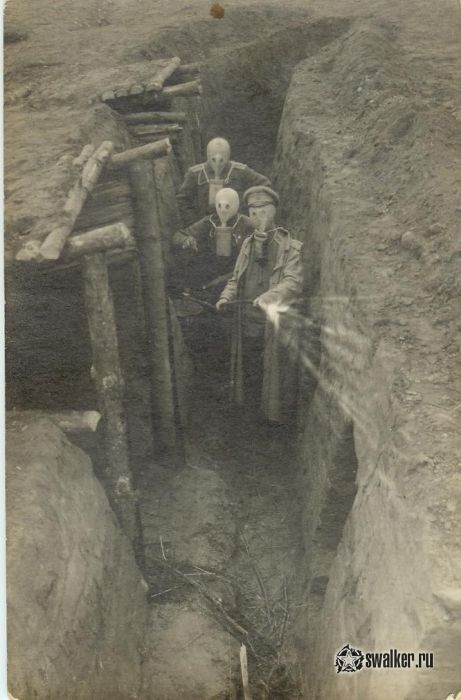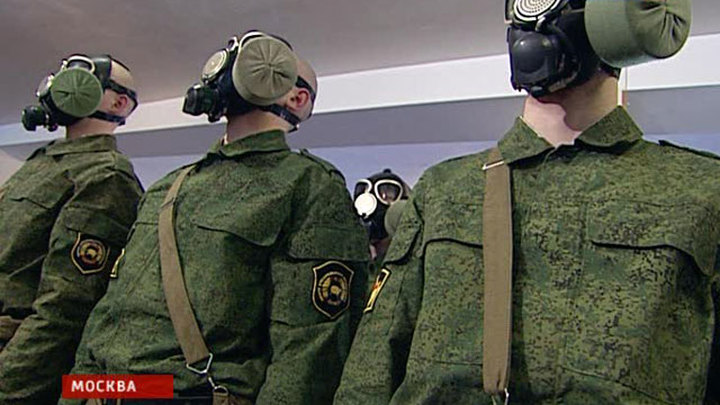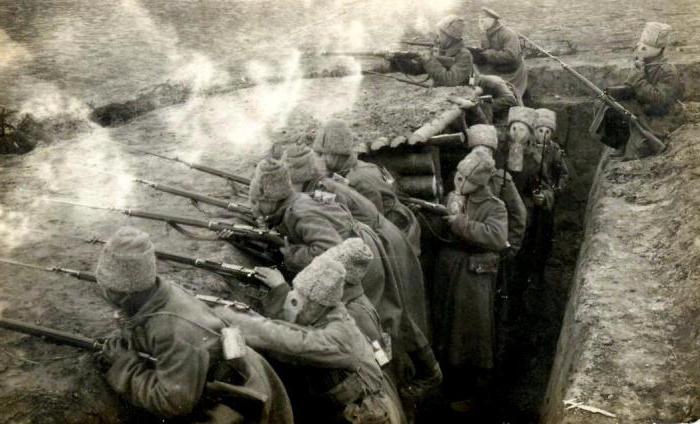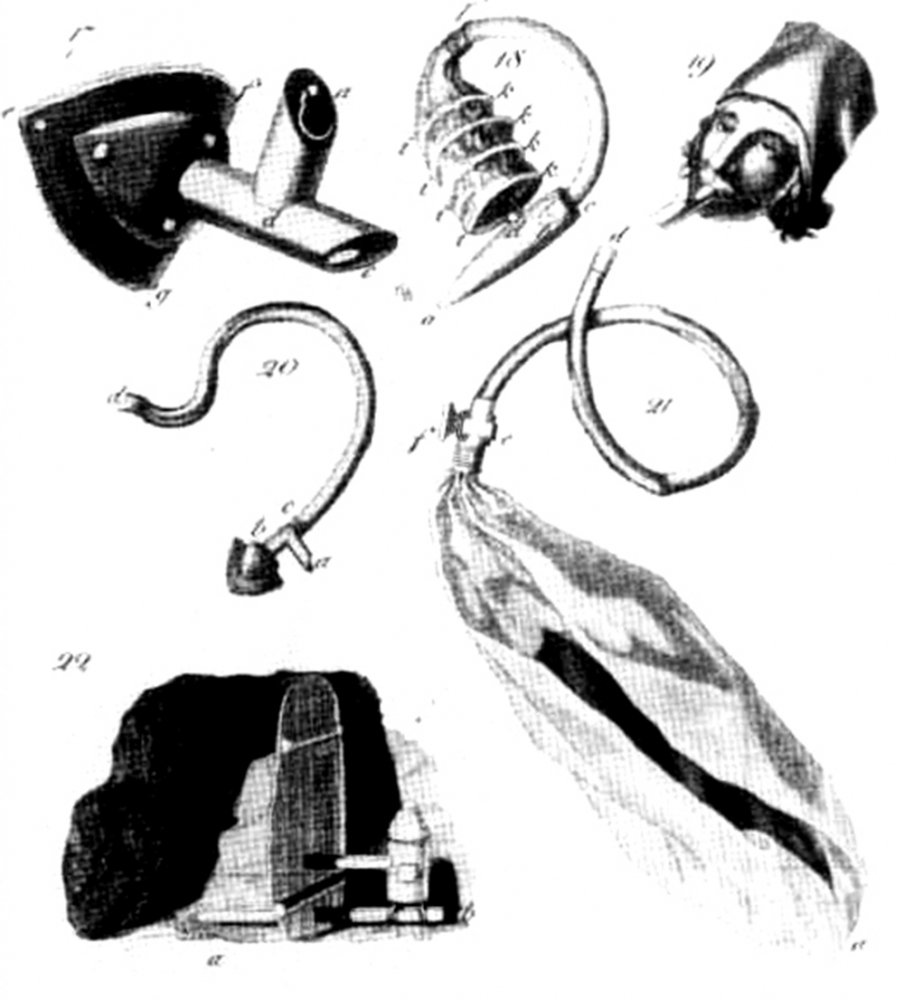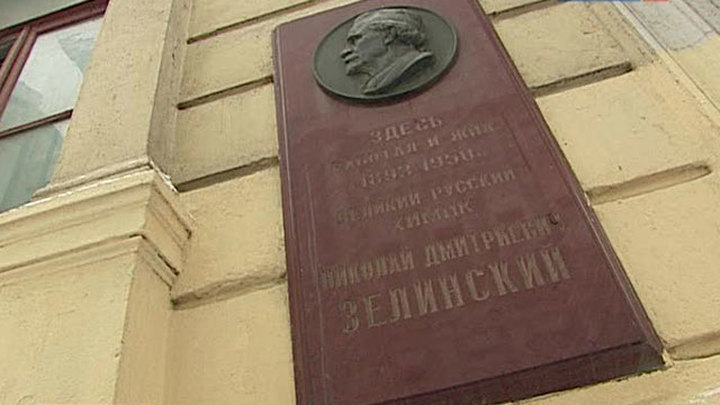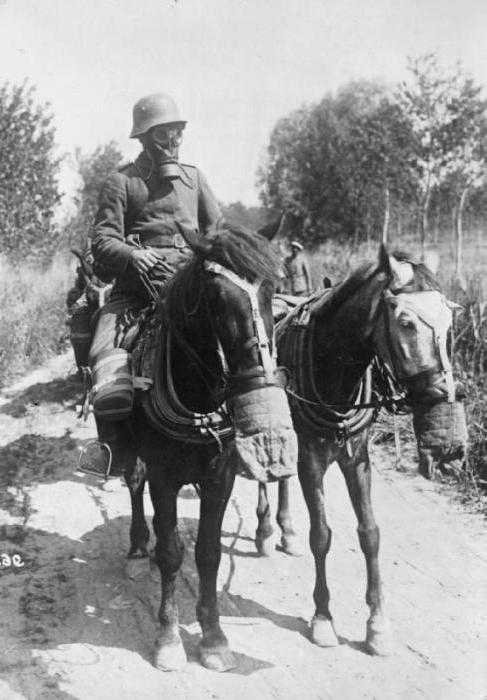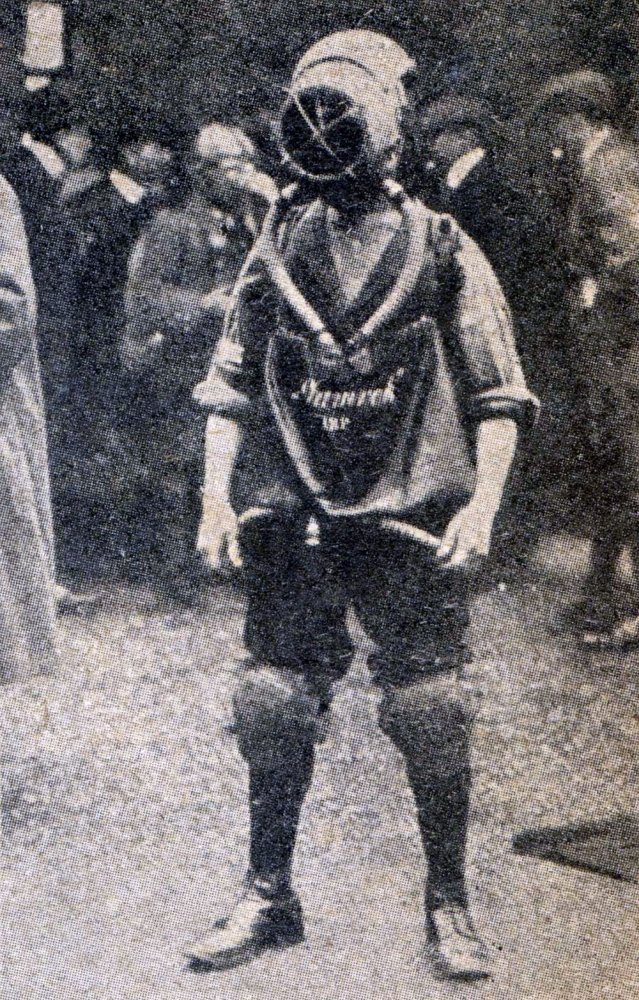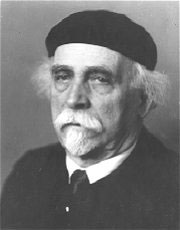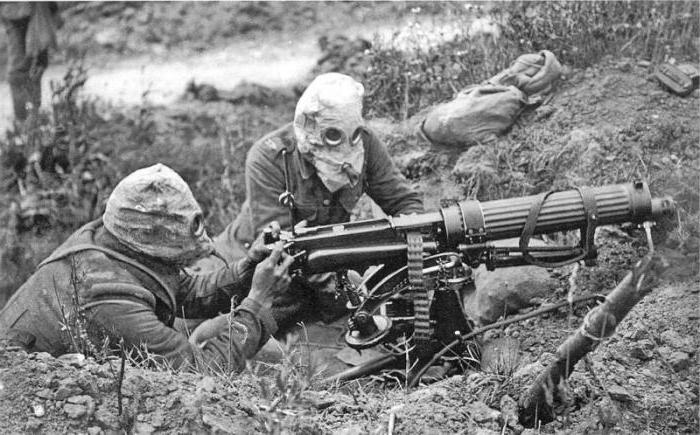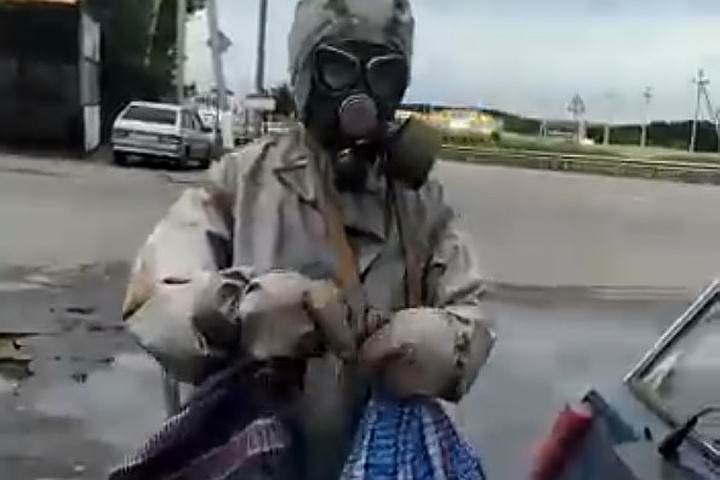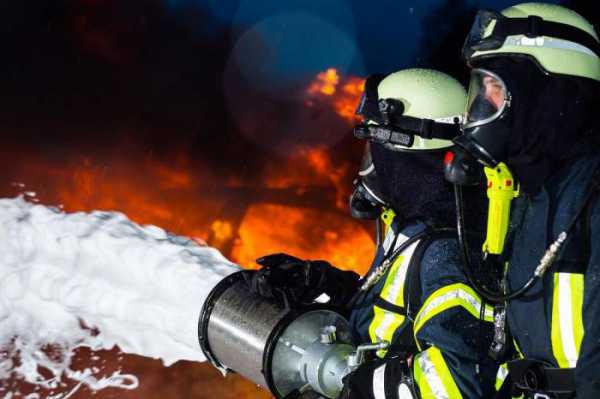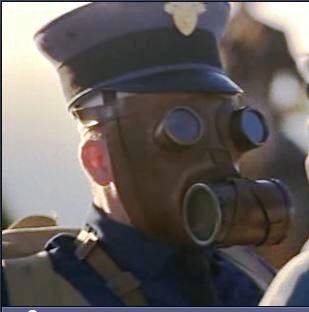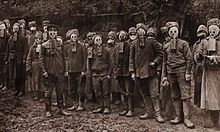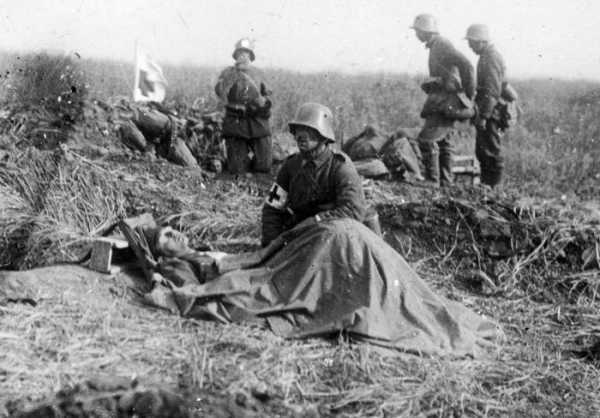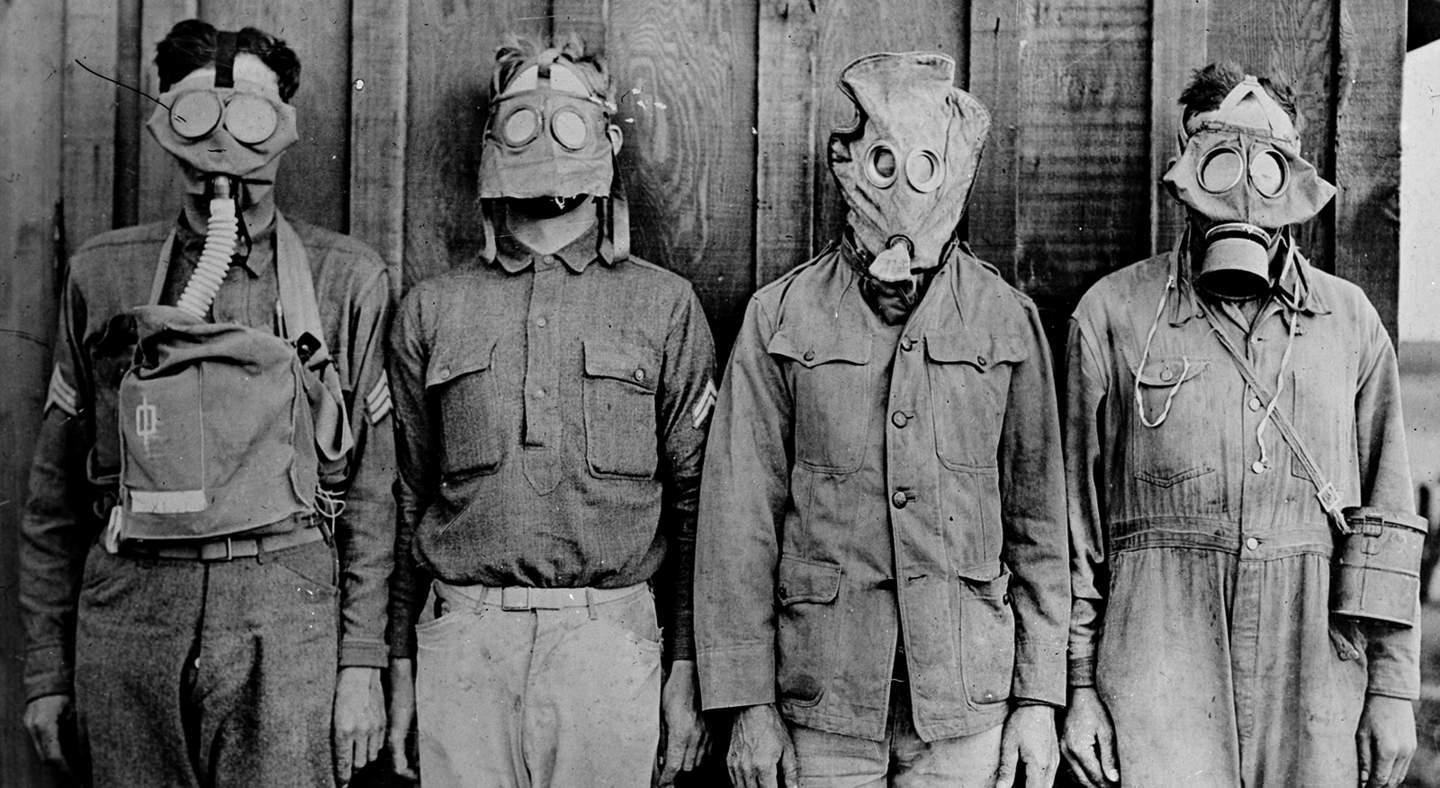History of the issue
Throughout its existence, oddly enough, mankind had to deal with toxic substances. At first, these could have been the products of combustion during numerous fires in cities and villages rebuilt from wood. They defended themselves from this only with improvised means, bandages soaked in water, and prayer.
The next stage in the development of personal protective equipment for the respiratory tract occurred during the period of numerous epidemics in Europe. Plague, cholera, smallpox and many other mass diseases "settled" in many European cities in the Middle Ages. Many are familiar from the illustrations of that time and the image of the so-called plague doctor: in a mask shaped like a bird's beak, in which incense or primitive means of protection were put in, like rags soaked in vinegar. Such doctors were called upon to heal the infected or remove the bodies of the dead. No one thought then that they were the main carriers of the infection.
It was only towards the middle to the end of the 19th century that more meaningful attempts to invent respiratory protection began to appear. For example, when gilding the dome of St. Isaac's Cathedral, transparent caps with hoses supplying air were used. Nevertheless, up to 60 deaths caused by poisoning have occurred among the craftsmen.
At the same time, experiments began with a variety of chemicals. The rapid development of chemistry at the end of the 19th century provided many opportunities for scientists and industrialists, but it was fraught with just as many dangers. For example, our hero, about whom we will describe a little below, Nikolai Dmitrievich Zelinsky, while still a young man, long before the First World War, was poisoned with dichlorodiethyl sulfide - a substance that in the future became part of mustard gas.
Another pioneer was the black American inventor Garrett Morgan. He created a kind of gas mask already in 1912. True, it was designed for firefighters and filtered not military substances, but only combustion products, but worked according to a very primitive scheme: a tube with gauze soaked in filtering substances simply lowered to the floor, since the fumes rise higher, and clean air remains below ...
Protection equipment
While chemists came up with increasingly complex formulas to defeat the human body, others tried to come up with a defense. But these funds were pitiful.
It all started with ordinary dressings soaked in special solutions. Such masks did not adhere well to the face, they had to be supported with a hand, in addition, they dried out faster than the gas dissolved. Soon, the bandages were replaced by flannel bags with glasses for the eyes and French masks-stigma Tambutyu.
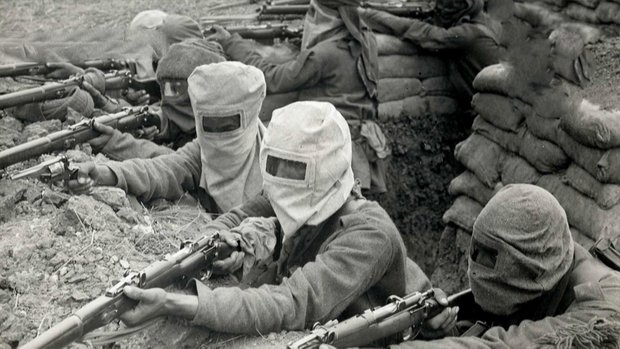
Used and flannel bags with glasses for the eyes
The British, for example, used a Pi-8 helmet with an exhalation mouthpiece. However, a moistened cloth could not protect it from all types of gas - it was necessary to find a universal remedy.
At the origins of aviation fuel
By this time, Professor Nikolai Zelinsky was no longer engaged in gas masks. In 1918-1919, he developed an original method for producing gasoline by cracking diesel oil and petroleum in the presence of aluminum chloride and bromide, laying the scientific basis for the high-performance production of aviation fuel. Developing this theme, Zelinsky managed to improve the quality of aviation gasoline.
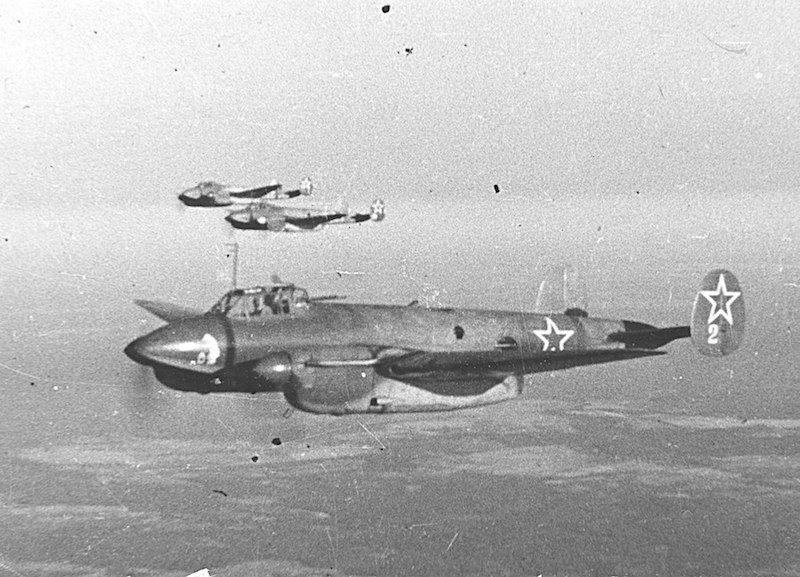
New gasoline made it possible to dramatically increase the power of engines and the speed of aircraft. The plane was able to take off with a smaller takeoff run, climb to a higher altitude with a significant load. These studies provided invaluable assistance to our aviation during the Great Patriotic War.For his work on organic chemistry of oil and catalytic transformations of hydrocarbons, Academician Zelinsky was awarded the State Prize in 1946.
Adsorption is the basis of the action of the gas mask
Adsorption is the process of selective absorption of gases, vapors and substances dissolved in a liquid (adsorbates or adsorptive) by solid porous absorbents (adsorbents). An adsorbent is a solid granular material with a porous structure and a large specific absorbing surface.
Currently, the following solid adsorbents are most common: activated carbon, aluminosilicates, silica gel, zeolites (molecular sieves). Here are some of their characteristics:
Characteristics Silica gel Aluminosilicate Act. coal
Pore volume (cm3 / g) _ 0.28-0.9 0.57
Pore size (10-8 cm)
Specific surface 600-1700 270-500 300-350
Bulk density 200-600 500-800 700
(kg / m3)
Gas masks use activated carbon due to its large specific surface area. Activated carbons are small crystals with a graphite lattice. These coals are used in granular form (1-7 mm) or in powder form.
The adsorption properties depend on the nature of the adsorbent, on the specific surface area and on the structure, i.e., on the size of the pores and their size distribution. Adsorption is a surface phenomenon (i.e., the adsorption process occurs at the gas-solid interface), which consists in the interaction of molecules or ions of the adsorbate with the surface of the adsorbent due to weak forces of intermolecular interaction (van der Waals, hydrogen, electrostatic ). The rate of such a process is high and adsorption occurs instantly if the surface of the adsorbent is easily accessible. For porous adsorbents, the pore size strongly affects the rate and completeness of adsorption. Physical adsorption (there is also chemical adsorption-chemisorption, but this type of adsorption is not typical for coal adsorbents) is characterized by a high rate, reversibility, and a decrease in the amount of adsorbed adsorbent with increasing temperature.
A gas mask can be used only when the partial pressure of the adsorbate is small, but in the case of high partial pressures, a strong decrease in the time of protective action and the degree of adsorption occurs.
Great inventors
When the first gas attack occurred, it was mistaken for a regular smoke screen. Many soldiers were killed during the fighting. One of the regiments caught in the green phosgene cloud was almost completely destroyed. From that moment on in Russian laboratories, scientists began a vigorous activity on the manufacture of gas protection equipment.
Initially, the army was supplied with cotton-gauze bandages moistened with water.
Information about what kind of gas the enemy was using was not available, so in the course of their activities, scientists made many mistakes. The professors suggested that the Germans could use 3 types of volatile substances:
- chlorine;
- phosgene;
- hydrocyanic acid.
In more detail about why there was a need for a remedy for lung protection, a thematic video will briefly tell.
Nikolai Zelinsky's invention
It was Russian scientists who played an important role in the invention of the gas mask. In 1915, the chemist N. Zelinsky worked in the Petrograd Central Laboratory of the Ministry of Finance, where he was struck by the idea of using coal to protect light soldiers from gases. His activity was associated with the production of alcohol, in which coal was used to remove fusel oils. During tests, it was found that this rock has the ability to absorb volatile toxic compounds.
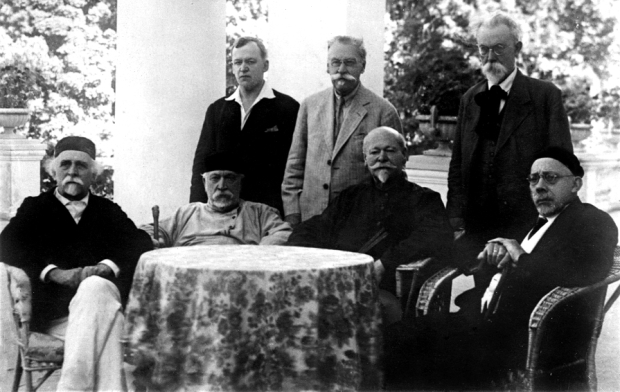 Sanatorium "Uzkoe" (1934). Scientists of the USSR. From left to right: sitting ND Zelinsky, IA Kablukov, NM Kizhner, AN Severtsov; N. N. Luzin, M. N. Rozanov and V. I. Vernadsky are standing.
Sanatorium "Uzkoe" (1934). Scientists of the USSR. From left to right: sitting ND Zelinsky, IA Kablukov, NM Kizhner, AN Severtsov; N. N. Luzin, M. N. Rozanov and V. I. Vernadsky are standing.
Initially, the charcoal filter was placed between layers of gauze bandages, which were worn by people in the test room. Good results could be achieved only with full adherence of respirators, ensuring tightness.
As soon as all the experiments were carried out, Zelinsky made a report on his invention to the General Staff, where it was decided to urgently start the production of the first protective equipment.
The first gas mask had a rectangular shape, with a rubber hose soldered into the upper part of the neck and a device for cleaning glasses. The type of breathing in him was pendulum. Such a means of protection could be worn on the side and quickly activated. Zelinsky's gas mask was patented only in 1916.
 The picture shows a prototype of Zelinsky's gas mask.
The picture shows a prototype of Zelinsky's gas mask.
For more information, you can watch a video with an excerpt from a scientific film about Zelinsky and his invention.
Innovation from Lewis Haslett
The history of the gas mask is complex and confusing. There is an opinion that attempts to make it were made back in the 17th century, when the plague was raging. The first patented means of protection against toxic impurities in the air are considered to be the inventions of Lewis Haslett. His device was recognized in 1849 and was called "lung protector".
 Civilian filtering gas mask GP-7
Civilian filtering gas mask GP-7
In terms of chronology, the first modern gas mask GP-7 was developed by an American scientist. A felt block was used as a filter. Breathing was done through valves. Protective equipment was attached to the nasal passages or mouth. The active development of further technologies to ensure the protection of the respiratory system began during the First World War.
Garrett Morgan's invention
G. Morgan is a self-taught scientist who was engaged in activities aimed at ensuring order in society and protecting health in industries. The emergence of a gas mask is associated with the desire to provide normal working conditions for firefighters who enter smoky rooms. His brainchild was patented in 1912 under the name "breathing device", in another way it was called the Morgan helmet. In the future, the device will be used during the hostilities of the First World War.
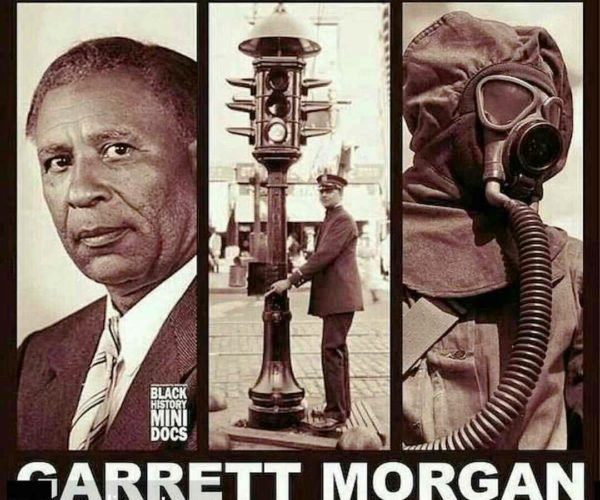
The composition of the device at the time of registration was as follows:
- a hood located above the crown;
- a tube that reaches the ground, attached to the hood;
- an exhaust valve for removing carbon dioxide exhaled by a person.
The end of the tube has been treated with an absorbent material that does not allow the poisonous gas to pass through. During his research, Morgan found out that fumes and smoke rise up, and below, near the floor, there is a layer of clean air.
Nikolai Zelinsky's invention

In the Russian troops, during the gas attack, the soldiers protected the respiratory organs with a gauze bandage soaked in a special agent. There was no benefit from such protection. The creation of an effective means of protection was required.
Russian chemist Zelinsky decided to use coal as a filter. As a result of experiments, he came to the conclusion that birch coal, which underwent heat treatment, absorbs toxic substances best.
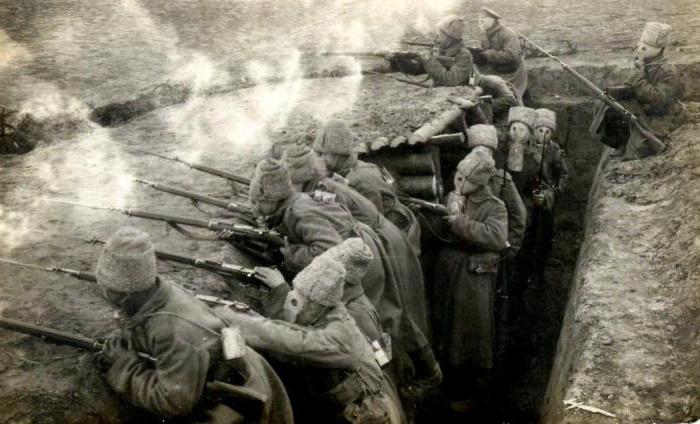
Zelinsky's idea was brought to life by engineer Kummant. He made a rubber mask that fits snugly around his face. Air entered the respiratory tract through the filter element. The device was created in a few months. The first batch of gas masks was sent to the army in 1916. In total, during the war, about eleven million gas masks were manufactured for the Entente army.
However, Haslett and Zelinsky were not the only ones who invented the gas mask. They were among those who worked on a common problem. It consisted in protecting the respiratory system from smoke or poisonous vapors.
Investigation of the adsorption properties of activated carbon in practice
Experience number 1
The purpose of the experiment: Investigation of the adsorption properties of activated carbon in practice.
Experimental technique:
A dilute solution of the dye (fuchsin and litmus) was prepared. Poured 2-3 ml of solutions into tubes, added activated charcoal to each tube, closed with a stopper and vigorously shaken several times.
Observations: discoloration of solutions of fuchsin and litmus in test tubes.
Experience number 2
The purpose of the experiment: Investigation of the adsorption properties of activated carbon in practice.
Experimental technique:
Received nitric oxide (IV) - brown gas. Trying to prevent gas losses, we quickly placed 2-3 tablets of activated carbon in a test tube with gas, closed it with a stopper and shaken it several times.
Observations: the disappearance of the brown color of the gas in the test tube.
Conclusions: as a result of the experiments carried out in practice, we were convinced of the manifestation of adsorption properties of activated carbon.
Where the gas mask was invented - Security Portal
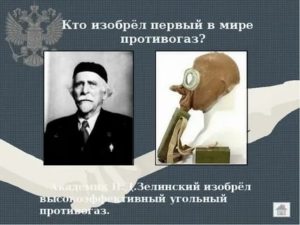
Education January 4, 2017
It is still not known who invented the gas mask. There is no consensus on this issue. Their primitive prototypes were used as far back as the Middle Ages, when doctors used special masks with long noses.
Medicinal herbs were placed in them. Doctors believed that this could protect them from plague and other epidemics. More seriously, they took up the creation of a gas mask in the late nineteenth - early twentieth century.
It was connected not with medicine, but with military affairs.
Briefly about gas masks
Before you find out who invented the gas mask, you should clarify what it is. It protects the respiratory system as well as the eyes and skin.
There are two types:
- Filtering - protects against certain toxic substances. The current wearer breathes air from the environment, which passes through the filter.
- Isolating - provides a person with air from a container filled with a limited amount of oxygen.
The invention of gas masks was associated with the emergence of a new type of weapon - poisonous gas. It is rather difficult to determine in what year the gas mask was invented, since different scientists around the world worked on this device at the same time.
Lewis Haslett's invention
Who Invented the Gas Mask? In terms of chronology, the first device that belongs to modern gas masks was invented in 1847. American Lewis Haslett became its author.
The patent was granted for an invention called "Lung Protector". It included a block and a felt filter. The block was equipped with valves to allow inhalation and exhalation. It could be attached to the mouth or nose.
However, during the First World War, a more reliable means of protecting soldiers was required. When the Germans began to conduct gas attacks, scientists began work to improve the existing gas mask.
Who Invented the Filtering Gas Mask for WWI Soldiers?
Nikolai Zelinsky's invention
In the Russian troops, during the gas attack, the soldiers protected the respiratory organs with a gauze bandage soaked in a special agent. There was no benefit from such protection. The creation of an effective means of protection was required.
Russian chemist Zelinsky decided to use coal as a filter. As a result of experiments, he came to the conclusion that birch coal, which underwent heat treatment, absorbs toxic substances best.
Zelinsky's idea was brought to life by engineer Kummant. He made a rubber mask that fits snugly around his face. Air entered the respiratory tract through the filter element. The device was created in a few months. The first batch of gas masks was sent to the army in 1916. In total, during the war, about eleven million gas masks were manufactured for the Entente army.
However, Haslett and Zelinsky were not the only ones who invented the gas mask. They were among those who worked on a common problem. It consisted in protecting the respiratory system from smoke or poisonous vapors.
Gas masks by other inventors
There is information about inventions in other regions long before the appearance of the device of Zelinsky and even Haslett.
Examples of inventions:
- In 1871, Irish physicist John Tundalls created a respirator that protected the respiratory system from smoke and poisonous vapors that are released during a fire.
- In 1891, Bernhard Lobs created a respirator that consisted of a metal container. It was divided into three chambers.
- In 1901, a respirator appeared that completely covered the head. The air passed through a carbon-based filter.
- In 1912, Garrett Morgan created a device to protect firefighters and engineers who have to work in an environment with a high concentration of toxic substances. Originally an inventor from the USA.
- Another design of the gas mask in the United States was presented by the inventor Alexander Drager, who was a native of Germany. He patented his device in 1914.
It is difficult to say in which country the gas mask was invented. It was created both in the United States and in Russia. However, the Zelinsky apparatus became the most widespread during the First World War. It was implemented not only in Russia, but also in England and Germany. The device was recognized all over the world, but the Russian scientist earned nothing from it.
Who Invented the First Gas Mask?
There are many types of gas masks, and no one can argue with that. They have been in use for several centuries: they are necessary for military and government officials, who, on occasion, will be required to enter an area with gas. Regardless of the type of gas masks, they all serve the same purpose - to help survive the threat of gas poisoning. No one wants gas or even smoke to enter the lungs. So, the gas mask was invented to reduce and eliminate any substances that could harm our body.
The first gas mask called an inhaler or lung protector
The first gas mask appeared in 1847. It was invented by a man named Lewis Haslett. This invention allowed a person to breathe consistently through the nose or through the mouth when he was in an area where he could not breathe normally. This gas mask was designed to eliminate unwanted inhalation: it trapped harmful substances using a filter that did not allow bad air to pass through, thereby allowing a person to breathe without harming the body.
Filtration of dust and non-toxic substances
The idea of the filter got widespread in the creation of other types of gas masks, and the gas mask itself became a very useful thing for those who used it. In most cases, it has been used to filter dust and other substances so that they do not enter the mouth and nose and interfere with normal breathing. However, such a gas mask could not protect against harmful poisonous toxins.
Everything got better
Several years passed, the concept of the gas mask remained the same, but the invention itself underwent some changes: in the end, the gas mask could trap any gases and harmful substances, which allowed people to move calmly, without cause for alarm, in a gas environment. After natural disasters in some countries, residents were told to use gas masks more often because it was unclear what substance they could inhale into their lungs.
The Ukrainian who invented the first gas mask
Nikolay Zelinsky investigated the unique properties of activated carbon. Its porous surface was capable of absorbing a large amount of harmful substances. Plus, coal is a cheap and affordable material.
Together with the engineer Kumant, they designed a container with metal nets, between which layers of coal were shifted. An orange rubber cap was attached to them.

The first gas masks saved many lives
But such a gas mask had its drawbacks - the rubber cracked and torn over time, the coal plates broke, frayed, so the soldiers often inhaled fine coal.But despite this - the remedy saved from all types of gas available at that time. Zelinsky received letters of thanks from the front, and his gas masks were also made for the allied forces.
Cracking oil, activated carbon and gas mask
The scientific activity of Nikolai Zelinsky was wide and varied, but one of its main directions was the search for oxide catalysts in oil cracking. In particular, Zelinsky proposed a method to improve the reaction of catalytic compression of acetylene into benzene using activated carbon as a catalyst.
Around this time, in 1915, Zelinsky carried out work on adsorption and the creation of a coal gas mask, which was adopted during the First World War by the Russian and allied armies and saved many lives.
A characteristic horn on the gas mask attracts attention: there is an army myth, which says that it is necessary so that the cap does not slip. In fact, its purpose is to wipe the glass from the inside by threading a finger inside the mask.
It must be admitted that Zelinsky was not the first to discover the ability of charcoal to absorb vapors of chlorine, hydrogen sulfide and ammonia from the air. This was done in 1854 by the Scottish chemist John Stengouse, who developed a respirator, which is a mask that covers a person's face from the bridge of the nose to the chin. Charcoal powder was placed in the space between the two hemispheres formed by a copper wire mesh. Stengauz charcoal filters were only one of the alternatives and were not widely used before Zelinsky's work.
The first to suggest using birch charcoal taken from the fireplace, activated by calcination, to purify chemical solutions, drinking water, to remove fusel oils from vodka and to protect meat from decay, was Tovy Yegorovich, aka Johann Tobias Lovitz. Lovitz, who was born in Göttingen and came to Russia as a child, enjoyed the special favor of Mikhail Lomonosov, was in charge of the Main Pharmacy in St. Petersburg, and at the end of his life he was elected an academician of the Russian Academy of Sciences.
Gas masks of the second half of the 19th century improved from model to model, until in 1879 the American Hutson Hard proposed a gas mask in the form of a mask made of vulcanized rubber.
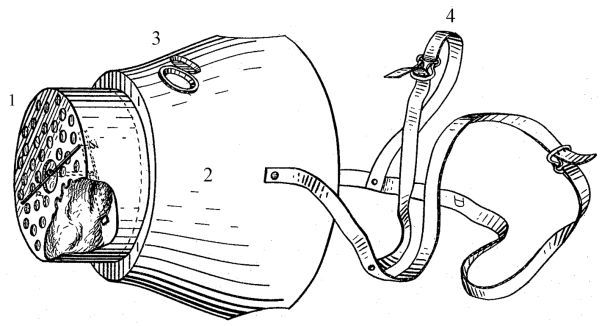 Hard's Filtering Cup Mask (1879)
Hard's Filtering Cup Mask (1879)
However, neither Hard nor the German chemist and inventor Bernhard Lab used activated carbon as a filter, or used it only as an auxiliary agent. American Samuel Danilevich recalled the sorbing properties of charcoal in 1909. The filter box of his gas mask, like the gas mask of Briton James Scott, was filled with charcoal. True, besides coal, the inventors used other filters.
Zelinsky's priority is that Nikolai Dmitrievich used not just charcoal, but activated carbon (its production was first established in Germany), that is, prepared in a special way, with increased adsorption capacity: the total pore surface of one cubic centimeter of activated carbon can have an area of up to 1500 sq. meters.
Activated carbon granules and their appearance at a magnification of 300 times.
In addition, Zelinsky hired Edmond Kummant, a process engineer at the Triangle plant.
In combat conditions, even the penetration of a small amount of a poisonous substance, due to the loose fit of the gas mask to the skin of the face, became fatal. Edmond Kummant solved the problem of "fitting the mask", and his name deservedly went down in history as the name of the full-fledged co-author of the gas mask. The recognition of the originality of Kummant's mask was also the fact that in 1918 the British Patent Office granted him a patent No. 19587 for a gas mask.
First chemical attacks
On April 22, 1915, a yellow-green cloud covered the battlefield in Belgium. There was a scent of pineapple and pepper in the air.This is how, for the first time in history, the Kaiser's army used chemical weapons. Chlorine caused a suffocating cough, chest pain, water collected in the lungs, and after a few days the person was dying.
Phosgene had a similar effect, but it was recognized by the smell of rotten fish. And the third type of gas - it is also the most insidious - mustard. He hit all the wet parts of the body - eyes, sweaty skin, feet wet in the trenches.
The soldiers began to vomit, lost their sight, and the body became covered with blisters. In the first 3 weeks alone, this gas killed and seriously injured 14,000 soldiers. Artillery forever changed its face - now they were afraid not only of the projectile, but also of the substances that it released.
Scientists' mistakes
The path of creating protective equipment was not straight and smooth. The chemists' mistakes were fatal. As already noted, one of the most urgent tasks was the search for neutralizing reagents. Scientists needed to find such a substance so that it was:
- effective against poisonous gases;
- harmless to humans;
- inexpensive to manufacture.
A variety of substances were assigned to the role of a universal remedy, and since the enemy did not give time for deep research, practicing gas attacks at any opportunity, insufficiently studied substances were often offered. One of the main arguments in favor of one or another reagent turned out to be the economic side of the issue. Often a substance was recognized as suitable only because it was easier for them to provide the army.


After the first gas attacks, servicemen are provided with gauze bandages. Various, including public organizations, are engaged in their production. There were no instructions for their manufacture, the troops received a variety of masks, often completely useless, since they did not provide airtightness when breathing. The filtering properties of these products were also questionable. One of the most serious mistakes was the use of sodium hyposulfite as an active reagent. The substance, when reacted with chlorine, released sulfur dioxide, causing not only suffocation, but a burn of the respiratory tract. In addition, the reagent turned out to be completely useless against organic toxic substances used by the enemy.
The discovery of the neutralizing action of urotropine saved the situation somewhat. However, even in this case, the problem of loose fit of the mask to the face remained acute. The fighter had to tightly press the mask with his hands, which made active combat impossible.
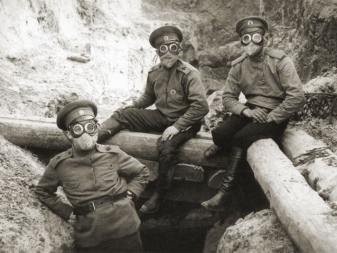
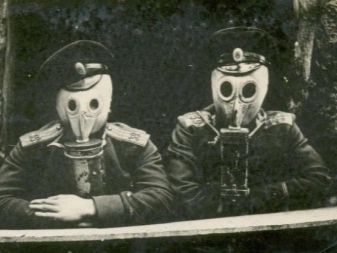
Zelinsky's gas mask: the history of creation and recognition
02/07/2011 was the 150th birthday of the Russian chemist Zelinsky who invented the gas mask.
For those who have not seen on TV dedicated. Video at the end of the blog.These days marks the 150th anniversary of the birth of one of the most outstanding Russian chemists Nikolai Zelinsky. He organized scientific revolutions in various fields - from oil production to protein chemistry. But his most famous brainchild will forever remain a gas mask. Having appeared very in time - at the height of the First World War, this product still continues to save lives. 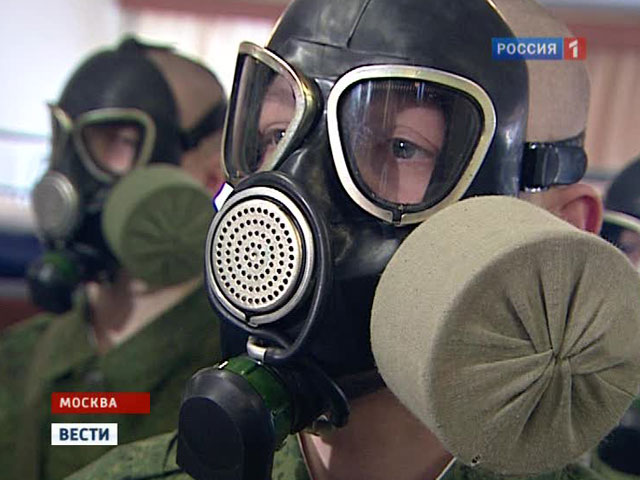
In the Vityaz special purpose center, a soldier is taught to put on a gas mask in just 7-8 seconds. His life depends on it. For almost 100 years, in all armies of the world, a gas mask has been considered the most reliable means of protection against weapons of mass destruction.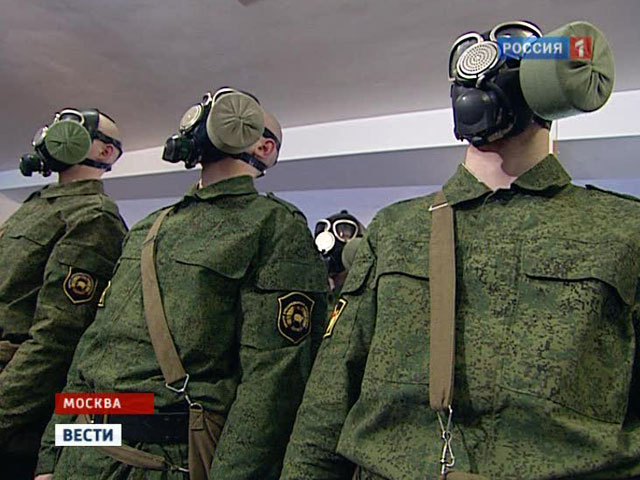
The first protective masks appeared in the 19th century. These were ordinary cloth bandages or impregnated hoods. But when in 1915 the Germans first used chemical weapons in combat conditions, it suddenly turned out that both British and French, and the same German gas masks are only suitable for protection against mosquitoes and flies.
The first effective army gas mask was developed in 1915 by the outstanding Russian chemist Nikolai Zelinsky. It was he who, for the first time in the world, proposed the use of activated charcoal as a protection against poisonous gases.The simplicity and reliability of his invention turned out to be so amazing that by the end of 1916 all the belligerent countries had adopted Zelinsky's Russian gas mask.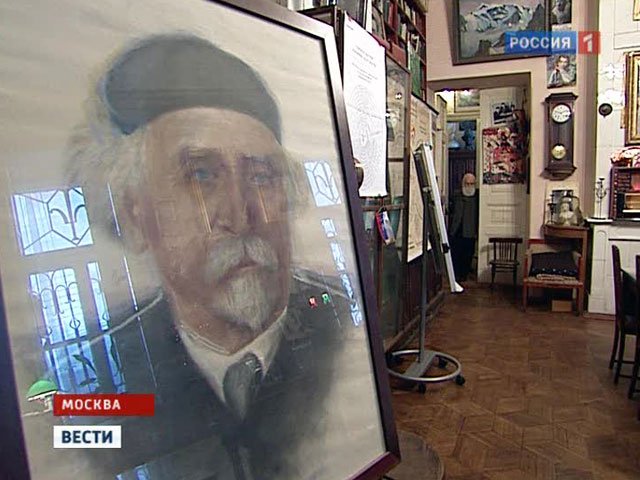
Nikolay Zelinsky was born in 1861. He began to work on the creation of a gas mask in the spring of 1915 after the Germans used poisonous gases against the Russian troops near Warsaw.
The only surviving example of Zelinsky's first gas mask in the world can be seen today in the scientist's former Moscow apartment. According to his son, Andrei Nikolaevich Zelinsky, a rubberized mask with two glasses pasted into it was offered to his father by the St. Petersburg engineer Kummant. True, the ingenious inventor also had powerful opponents. The Prince of Oldenburg, who was responsible for the production of Russian gas masks, did not want to lose multimillion-dollar government orders and put into production the outdated model of a protective mask he had lobbied.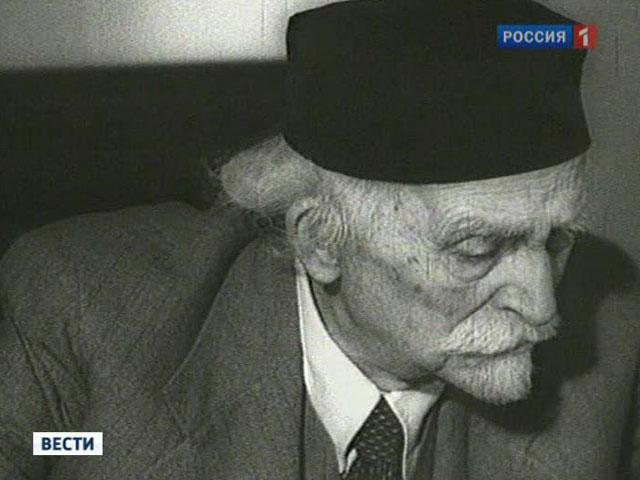
“Only by order of the tsar, after tests carried out at headquarters near Mogilev on February 3, 1916, where my father was present and personally reported to the emperor about the work of the gas mask, the gas mask was introduced into the production of the Russian army,” says Nikolai Zelinsky's son Andrei. "Over 11 million of these gas masks were produced during 1916-1917."
At the request of the allies, the Russian command generously gave them samples of a new gas mask. Zelinsky himself never attempted to patent his invention, since he considered it immoral to profit from the means of saving and protecting human life.
“He was, in principle, without silver, for him it was alien and absurd to think about any privileges, especially monetary privileges for his discoveries,” continues Andrei Zelinsky. “And, following in the footsteps of Pasteur, who tested the rabies vaccine on himself, my father was also the first to test this coal on himself. Himself in the laboratory of the Ministry of Finance on Zabaikalsky, 19, in the summer of 1915. This is also, in the end, a real scientific feat. "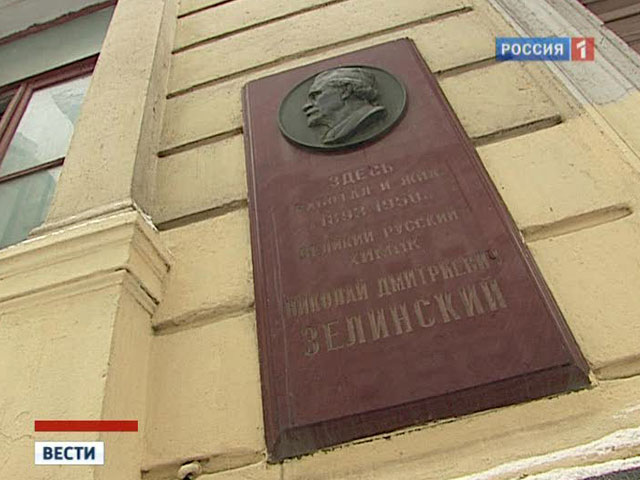
Zelinsky's gas mask is already being protected by the fifth generation of Russian soldiers, and many of its discoveries are still being successfully used by the Russian oil and gas complex. But neither in Moscow, where he worked for almost 60 years, and where there is a whole institute named after him, nor in St. Petersburg, where he invented his gas mask, there is still not a single monument to the genius Russian chemist.
Scientists' mistakes in the course of scientific activity
Before gas masks began to appear, which could really protect the lungs from suffocating vapors, soldiers during military clashes needed to somehow protect their airways, so the General Staff decided to start mass production of gauze bandages.
The main mistake of Russian scientists is the impregnation of masks with hyposulfite without using baking soda. The German invaders used chlorine vapor to attack the Russian front. As a result of the reaction of chlorine and hyposulfite, hydrochloric acid was formed, which, when inhaled, corroded the lungs.

Only by the end of 1915 did it become known that the Germans were using phosgene together with chlorine. By this time, the troops of our country were equipped with wet bandages. It was reported that the Moscow Institute has a means for impregnating masks containing urotropin. The discovery was made by Butlerov back in 1860.
After successful tests, Russia began to produce urotropine in large quantities. Fortunately for our soldiers, the assumptions about using hydrocyanic acid as a poison gas did not come true.
Zelinsky gas mask: structure
There were three prototypes - Petrograd, Moscow and government.
The first, in 1915, to enter service with a gas mask of the Petrograd model. The helmet was worn on a rectangular gas mask box with two bottoms, box size 200: 80: 50 millimeters. The lower bottom with the neck was closed with a cork stopper; the same neck, but higher, was soldered into the upper one.Between them was a metal mesh with a layer of gauze on both sides. 3-6 mm granular activated carbon was placed between the gauze pads. The filter volume was 700 cubic meters. centimeters, length - 174 mm. The box was protected by a tin cap. The mask was orange and the box was fastened with tape.
The Moscow model entered service in 1916 and was smaller with an oval box. The volume of the charcoal filter has become 1000 cubic centimeters.
However, approbation showed the need for improvement. And a third version of the Zelinsky gas mask appeared - like the State Gas Gas Plant. It was somewhat shorter than the previous one, with an elliptical box.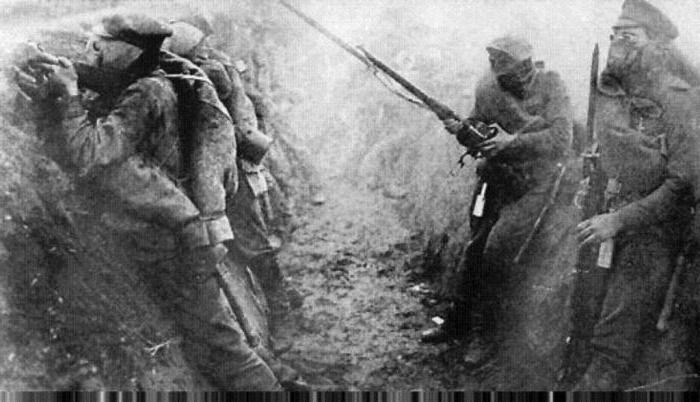
Coal as an adsorbent
John Stenghaus in 1854 invented a respirator in which charcoal became the main adsorbent. It was a two-layer mask, between the layers of which there was a sorbent - charcoal powder.
Companion of Mikhail Lomonosov, academician of the Russian Academy of Sciences Johann Tobias Lovitz proposed the use of birch coal for water purification, protection from meat rotting.
The merit of Zelinsky is that he was the first to use activated carbon as an absorber - carbon with an increased adsorption capacity. Specially prepared coal has up to 1500 sq. meters of porous surface per 1 cubic centimeter.


